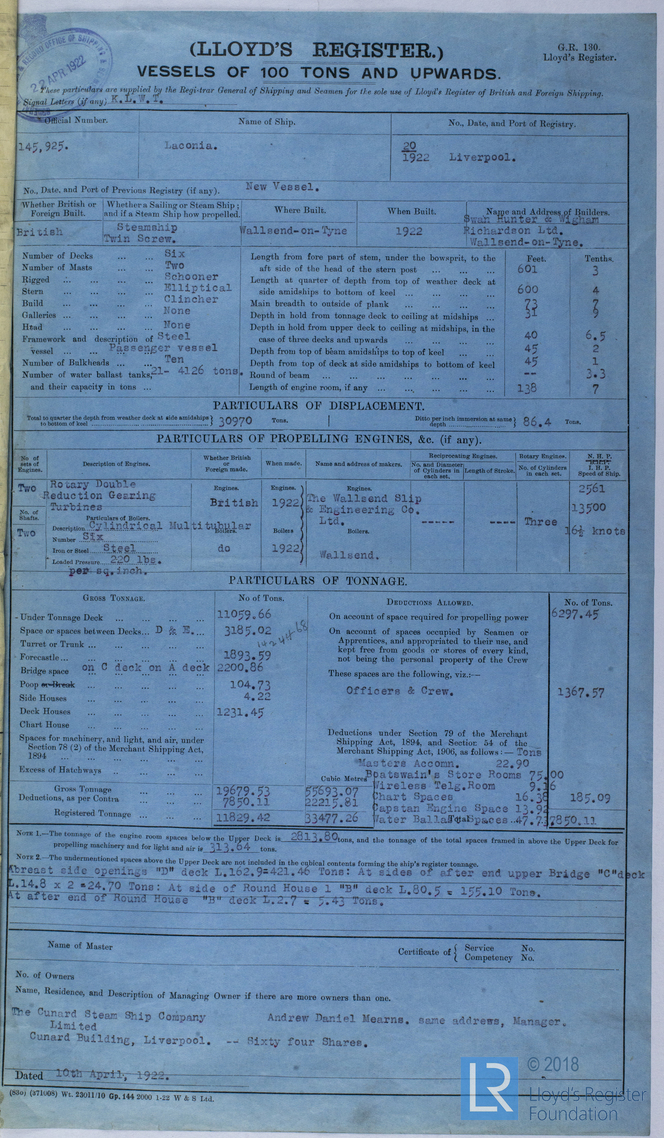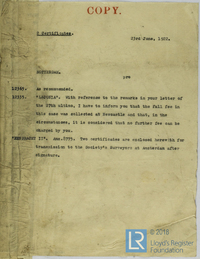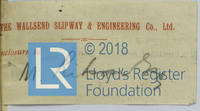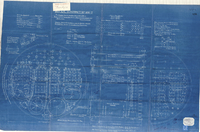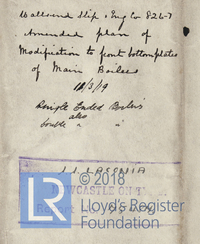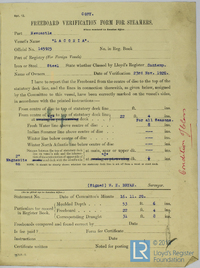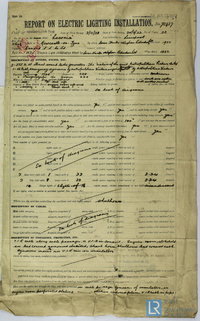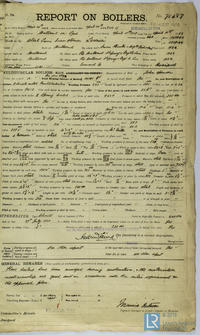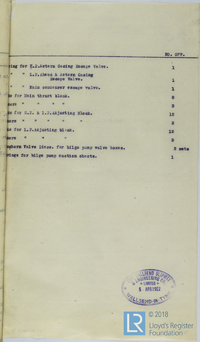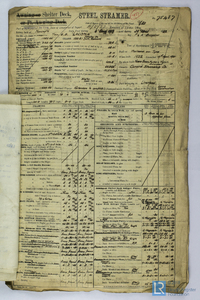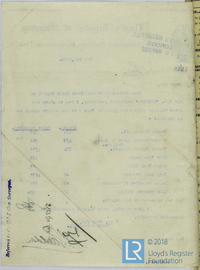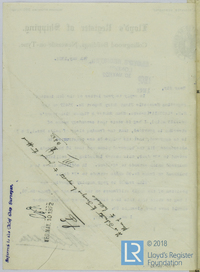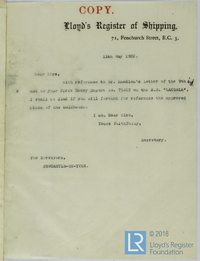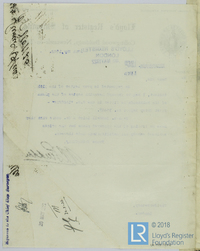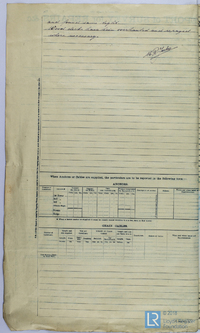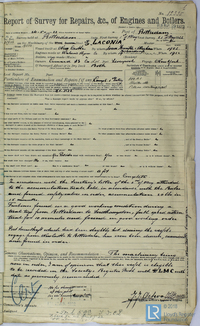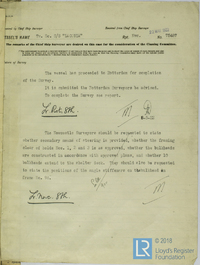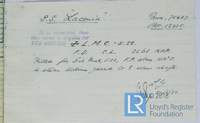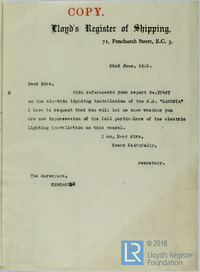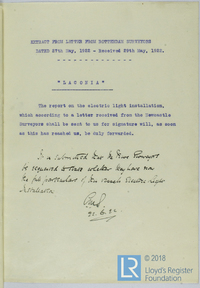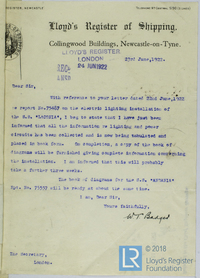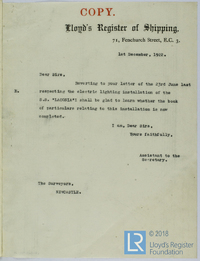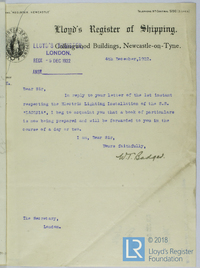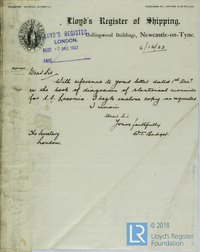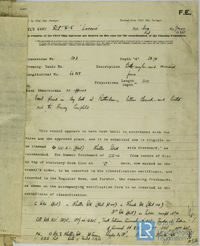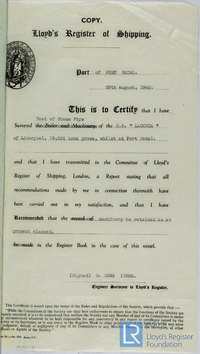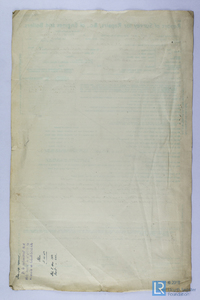- Related documents Related
- Full details Details
- Report document? Report?
Use the data export button to extract customised data sets from the Ship Plan and Survey Report Collection. Available in TSV and CSV formats.
Date recorded as the time of writing.
10/04/1922
The year in which a vessel’s construction is completed.
1922
The individual and/or organisation listed as having been responsible for constructing the vessel. This can/may be the same as the owner and/or manager.
Swan, Hunter & Wigham Richardson Ltd
The port or place in which the vessel’s construction took place, at the time of writing.
Wallsend-on-Tyne
A unique number allocated to a specific vessel by an official registration authority of the country of registry (flag) that the vessel belongs to (post. 1855).
145925
Official administrative title (often printed) of a record used by Lloyd’s Register or external organisations.
GR130 Vessels of 100 tons and upwards
The listed port to which a given vessel belongs.
Liverpool
The individual and/or organisation listed
Cunard Steamship Co Ltd
Broad categories and subdivisions of vessels related to their purpose or function.
Passenger Liner
Type of fuel used onboard a vessel.
Steam - Oil
Is the steamer assisted by sail?
No
A ship’s total internal capacity of a ship measured in register tons from the top of the floors to the tonnage deck.
11059
Description/specifications listed of the vessel’s engines and machinery. (The engines/machinery may have been surveyed separately before being assigned to a vessel).
Two rotary double reduction gearing turbines
The country, at the time of writing, where a vessel’s engines were constructed.
United Kingdom
Wallsend Slipway & Engineering Co
Is machinery fitted at the aft of the vessel?
No
Generally a smaller additional auxiliary boiler (often used while the vessel is at port).
No
Name of the Proving House responsible for the public testing and certification of a vessel’s anchors and/or chain cables.
No
Used to indicate the capability of early reciprocating steam engines, based on dimensions rather than performance. It is not a true indication of actual engine power.
2561
Name of ship as recorded on the record
Laconia
The process of transferring a vessel to water, but not necessarily her completion.
04/09/1921
Unique identifier for a given ship, it is assigned by a builder.
1125
The country in which the vessel’s construction took place, at the time of writing.
United Kingdom
Previously referred to as signal letters (c.19th C), radio call signs enable a ship to communicate and are assigned by the International Telecommunications Union (ITU).
K.L.W.T.
The country (flag) that a vessel is registered to, at the time of writing.
United Kingdom
Records that constitute Lloyd’s Register’s first official encounters with a specific vessel, e.g. a survey report.
N
The individual and/or organisation listed that is responsible for the everyday management of a ship. This may be the same as the owner.
Andrew Daniel Mearns
A vessel’s means of propulsion.
Steam
Predominant material(s) utilised in a vessel’s construction.
Steel
A ship’s total internal volume in ‘register tons’ (replaced by gross tonnage post 1982).
19679
Tonnage derived by deducting from the gross register tonnage the capacity that in unavailable for cargo, e.g. machinery space, fuel, crew accommodation etc.
11829
Location of construction for a vessel’s engines.
Wallsend
Date in which construction of a vessel’s engines were completed.
1922
Confirmation as to whether the vessel was equipped with refrigeration machinery to aid in the transport of frozen or chilled cargo/goods.
No
Does the vessel possess an auxiliary power source?
No
Is electric lighting fitted to the vessel?
No
A vessel’s calculated maximum speed.
16.5
Physical extent of a record.
1
Report an issue with this document
Have you noticed missing or incorrect data or images for this document?
Please let us know and we will rectify the issue as soon as possible.

